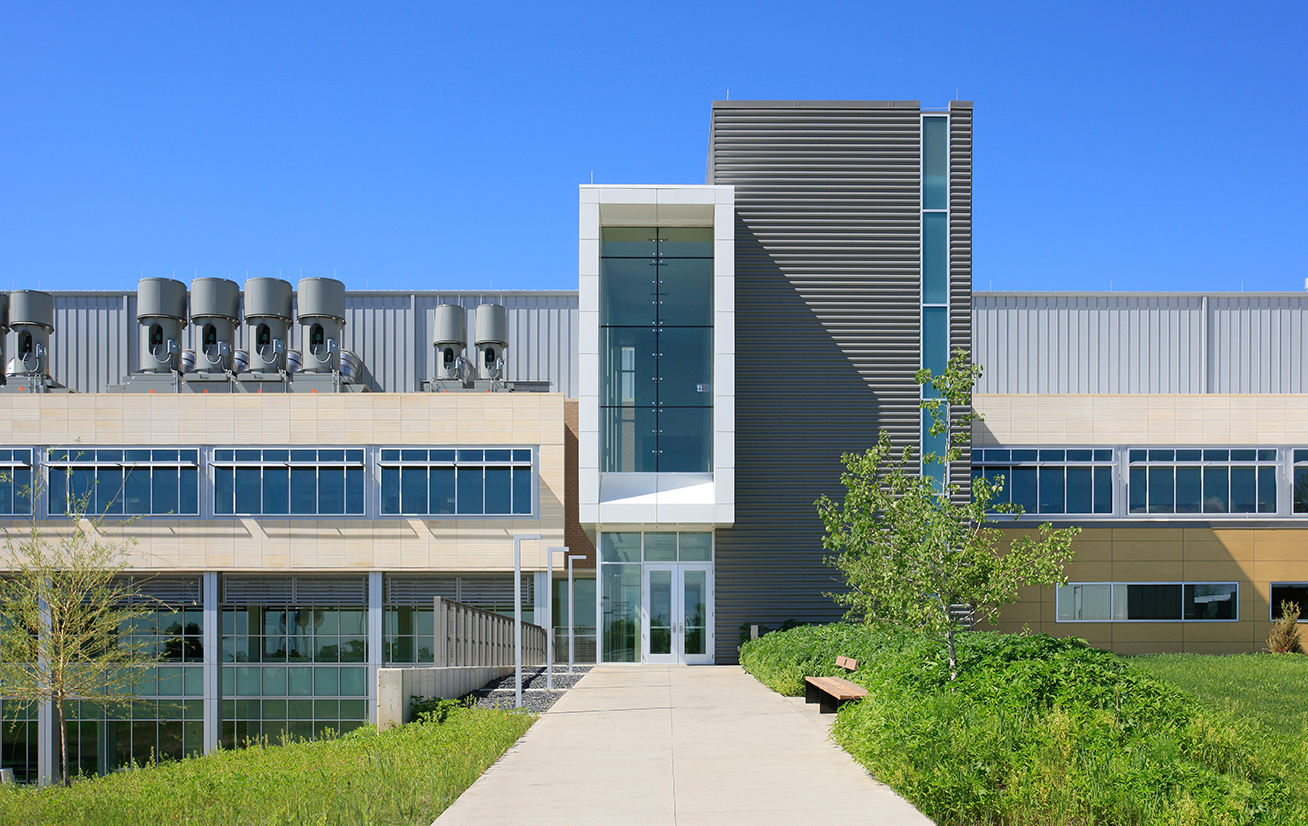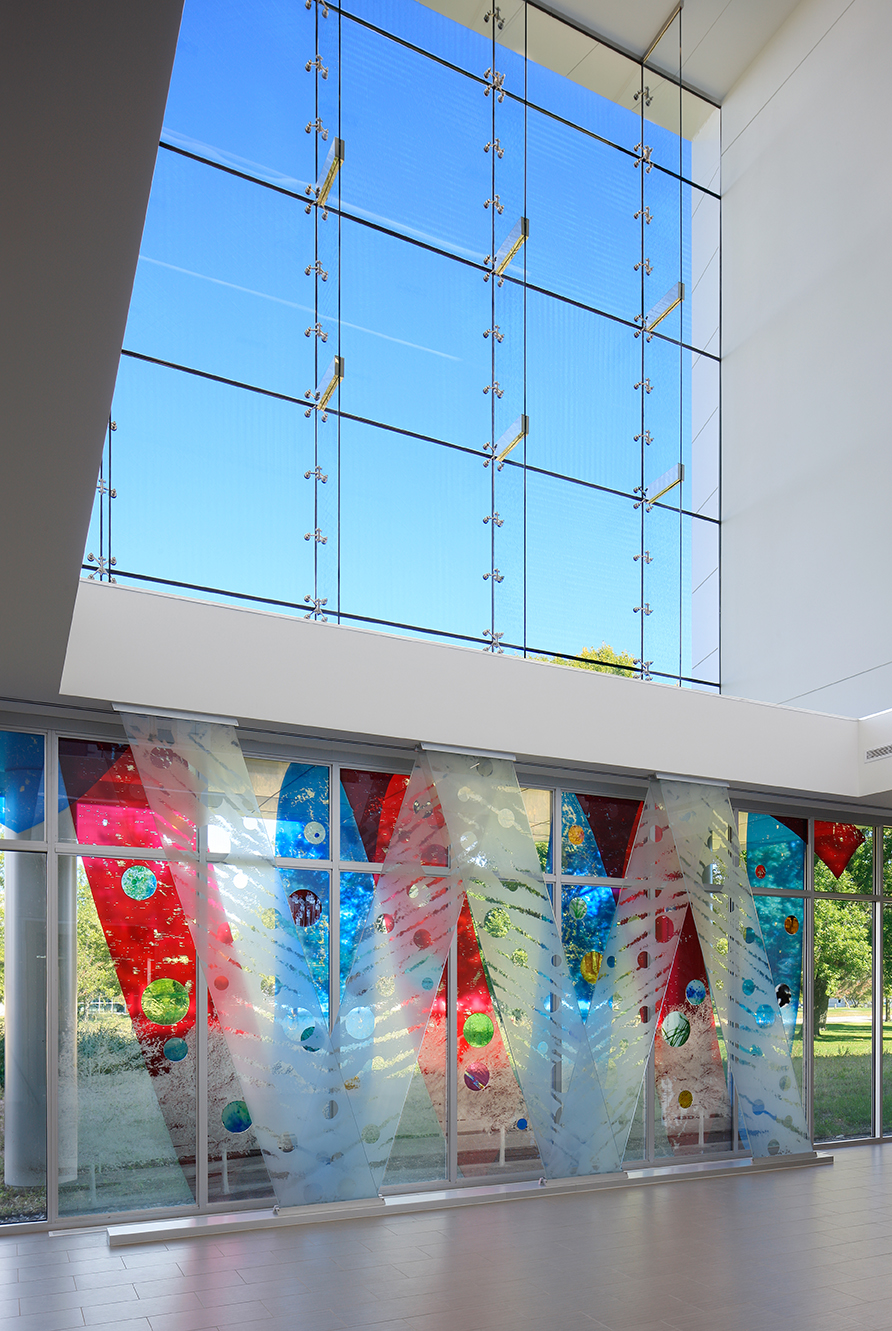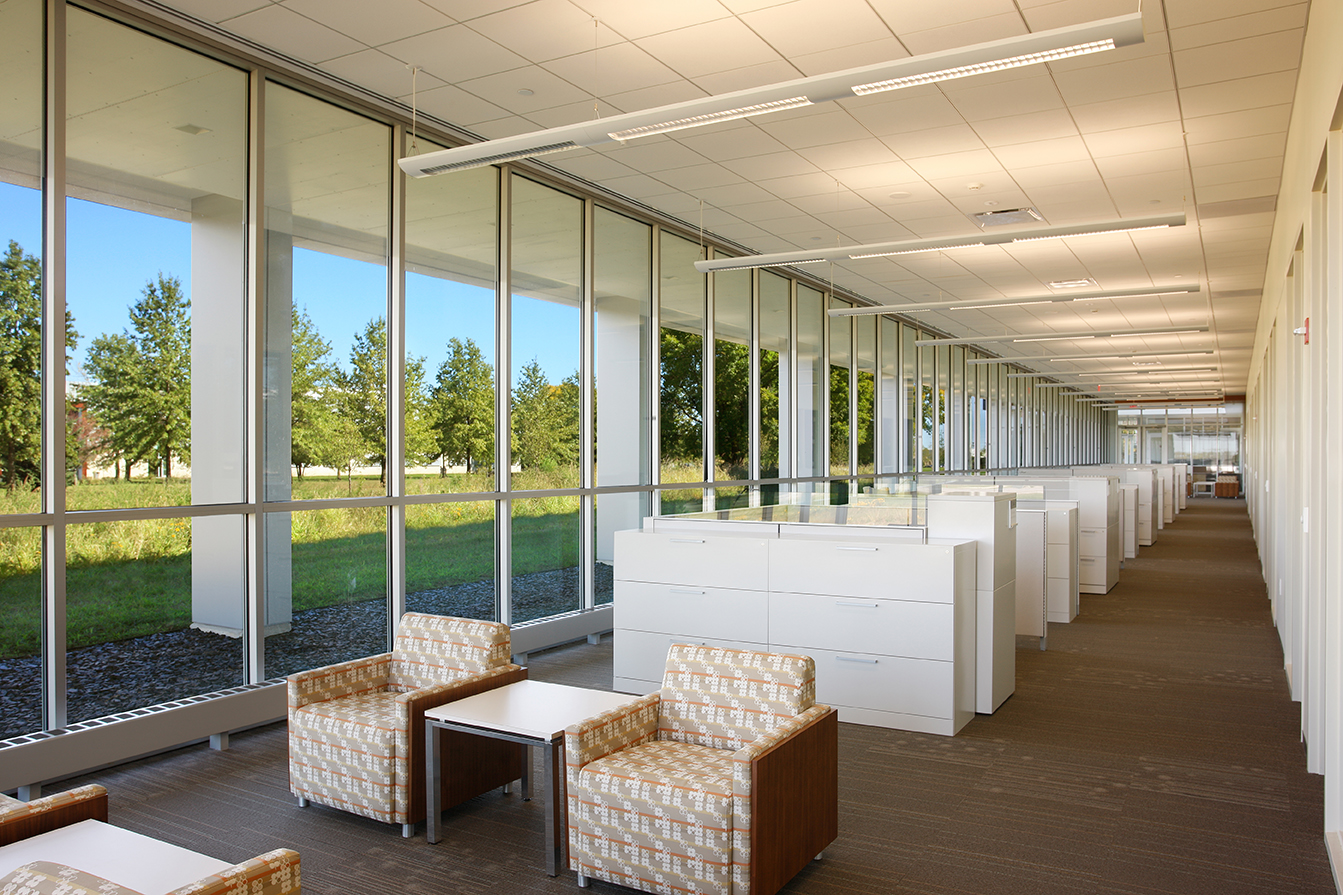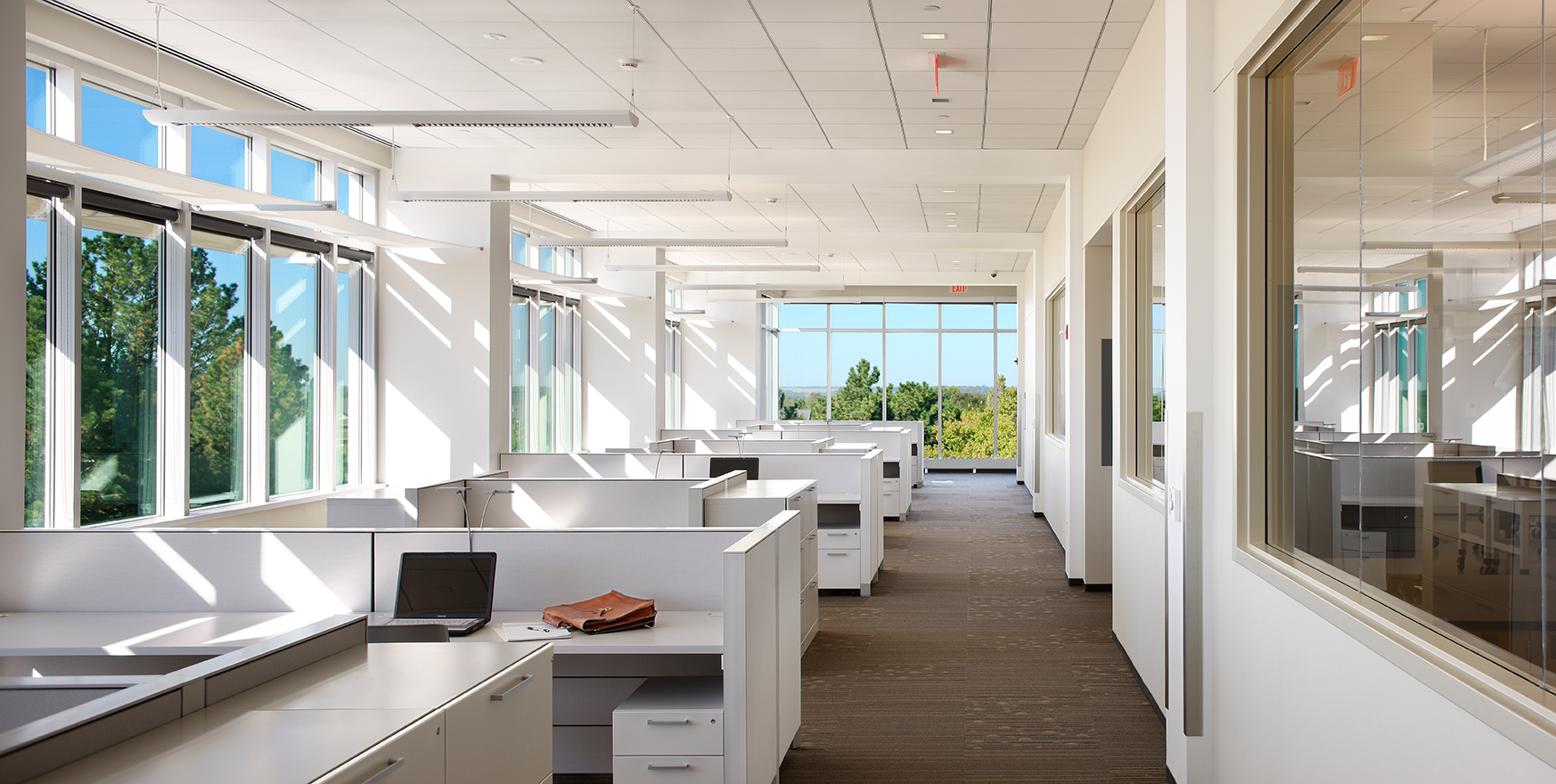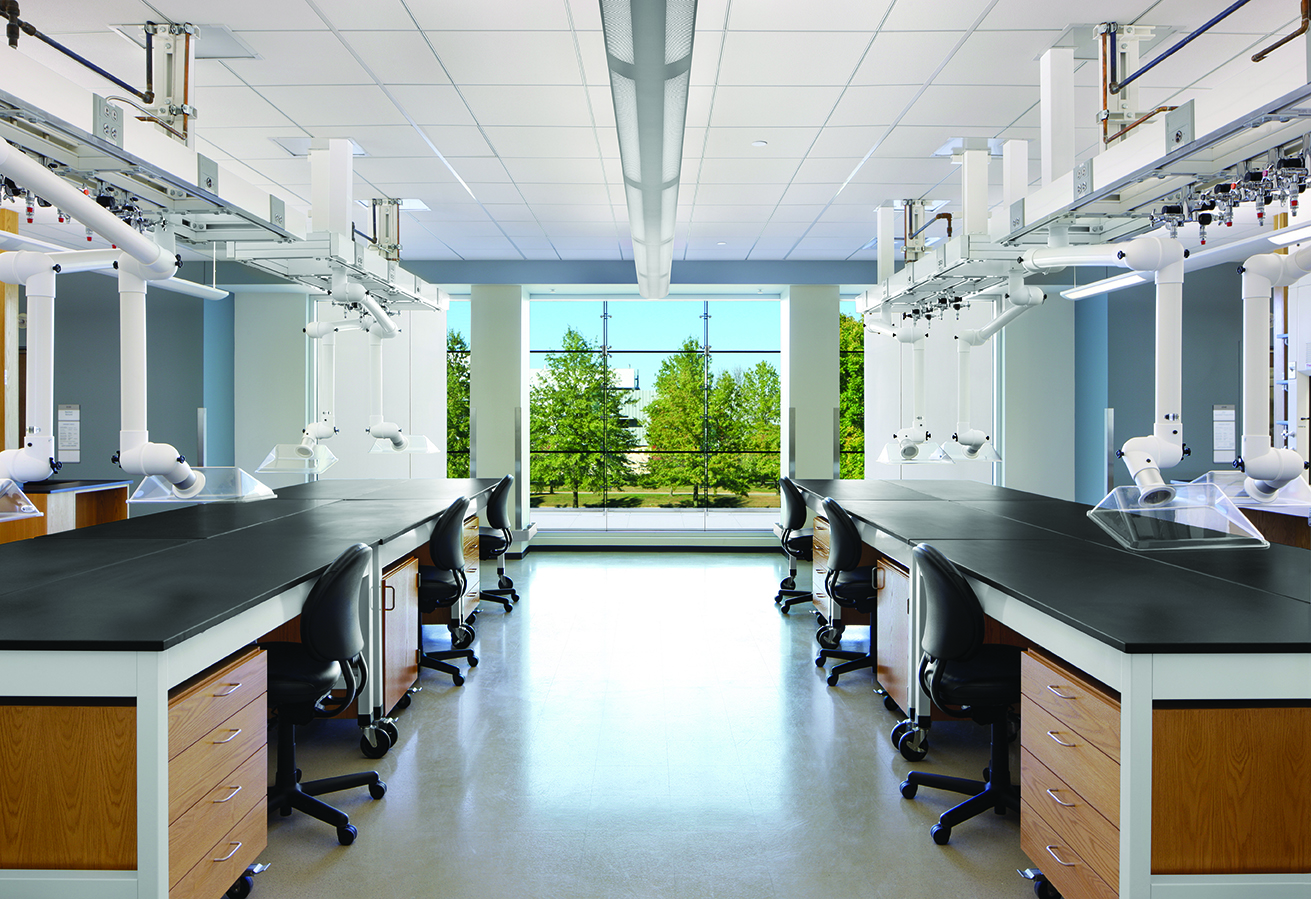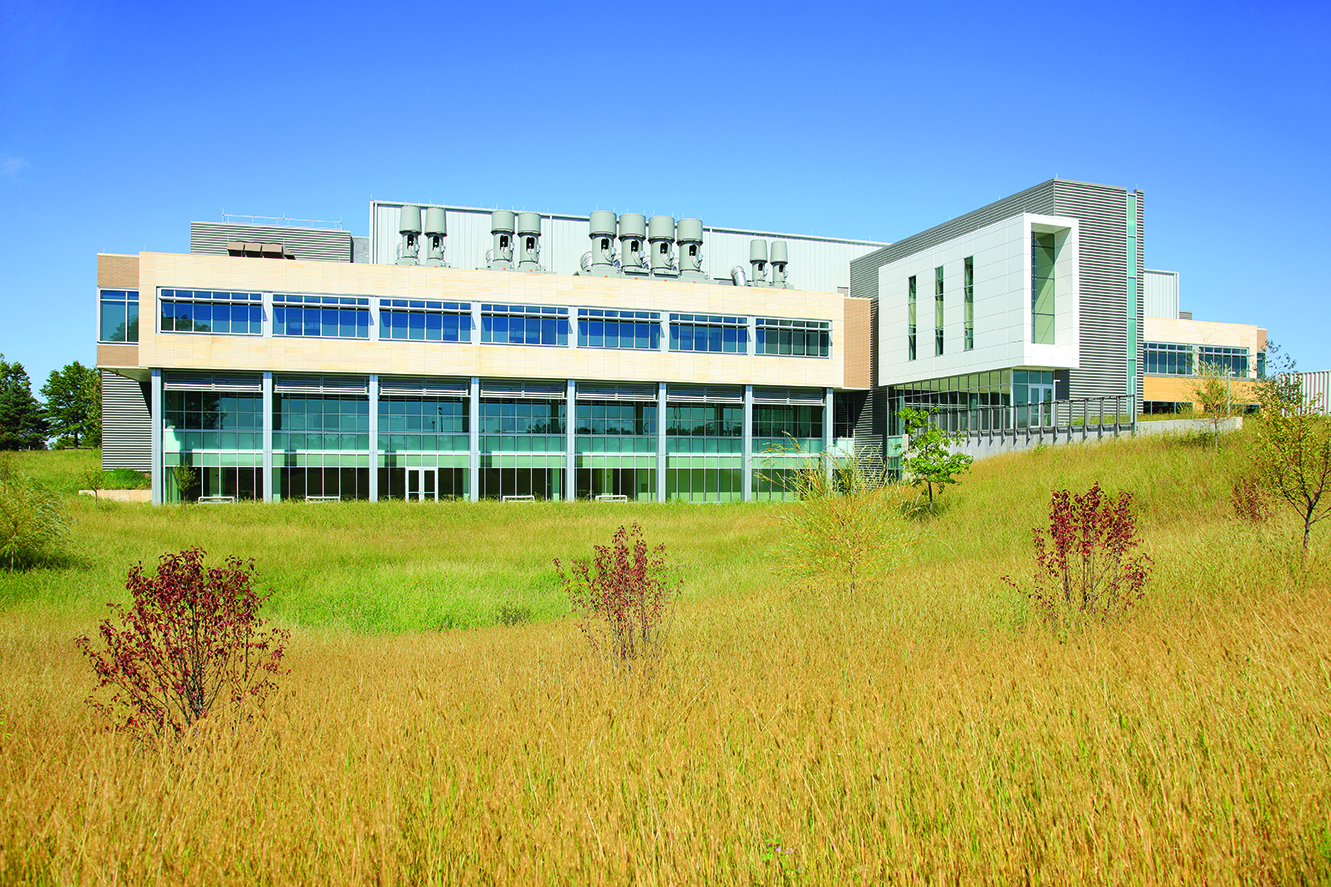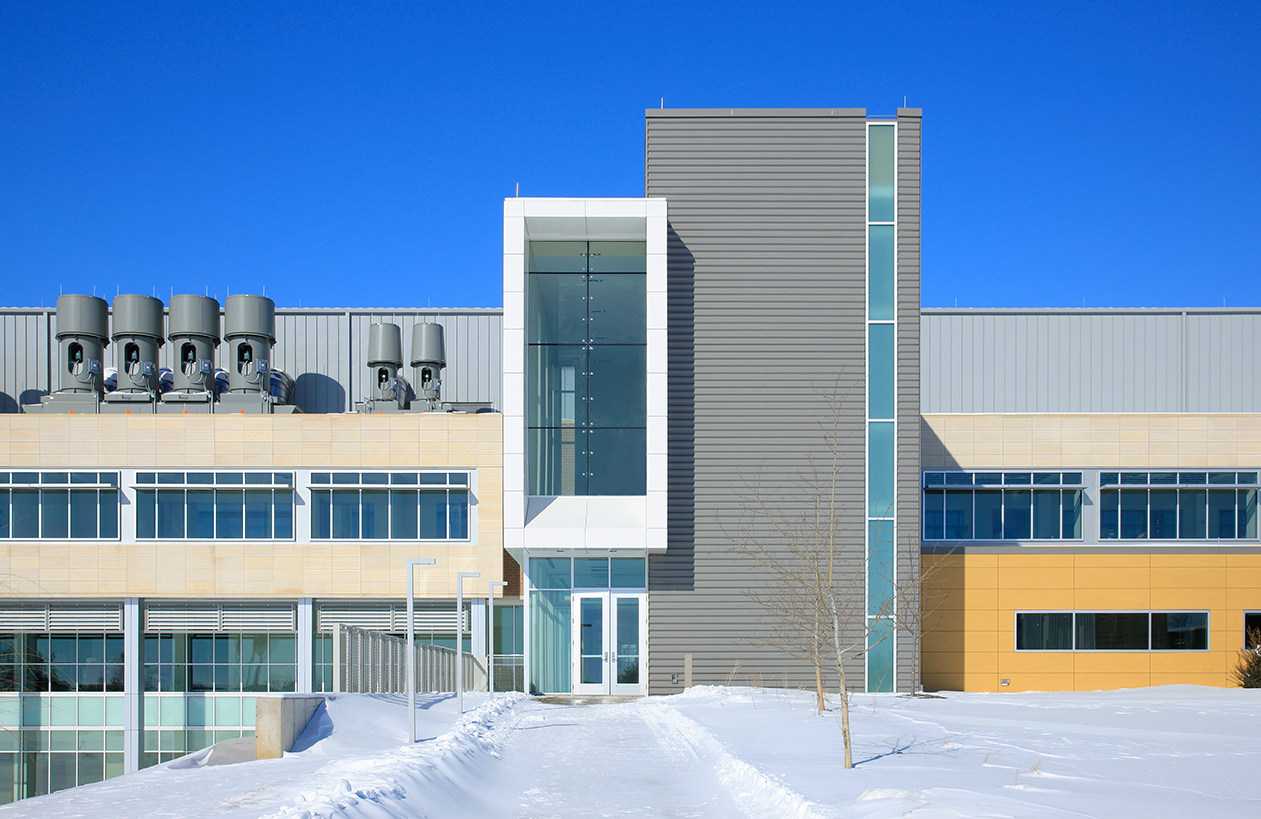University of Iowa State Hygienic Laboratory

-
ClientUniversity of Iowa
-
SQ. FT.113,900
-
Budget$37,750,000
-
Market
-
LeedGold
-
Year2010

- 2012 · American Institute of Architects, Iowa ChapterMerit Award
This new laboratory facility provides modern and flexible testing and administration space for a state hygienic agency, while projecting an image of visibility and transparency to the public. The building’s form and layout was driven by a singular, open lab space that runs the length of the building. Articulated as a solid masonry bar floating above the first floor, it defines a strong east-west axis. Ribbons of windows along the north and south facades break up the long elevations and allow an abundance of natural light in the labs.
The exterior finishes include a variety of materials, giving the building a layered composition that articulates the activities within. Light-toned brick and limestone clad the second floor lab “bar,” giving it a secure, but appealing aesthetic. Full height glass is used extensively on the first and lower levels to fulfill daylighting needs in office space and provide transparency and views. Gray metal wraps vertical circulation and service cores, as well as a third story mechanical penthouse that gives the building a distinctive profile and additional height. The two announced entry features are accentuated by a contemporary, white aluminum composite panel.
Announced public and employee entrances on the north and south facades organize a perpendicular cross-axis through the building and create signature focal points on those elevations. The public entrance along the North features a two-story high atrium with a large structural glass window wall that creates a dramatic first impression for visitors and provides staging for public tours. Opposite the window wall is another glass wall with views directly into the open lab area on the second floor. The employee entrance to the south extends beyond the main building form and is capped by a narrower structural glass window wall, with similar vertical proportions to the public entrance on the north.
The lab space is designed to maximize efficiency and flexibility, while encouraging collaboration and interaction between different departments and projects. Rows of versatile lab stations are paired with dry lab workspaces, allowing staff to easily expand and contract various lab activities as needed. The number of lab stations devoted to biology or chemistry can also fluctuate, ensuring the new facility will accommodate the demands of the agency today and well into the future.
The circulation system is designed to maintain separation between secure and public areas with the specific entrances for the public and employees tailored to those different needs and access requirements. The result is a hierarchy of access control and visual openness. A semi-public corridor running the length of the second floor allows visitors a clear view of testing work through large windows into the open lab, making it possible to provide in-depth tours without compromising security or disturbing lab activities. As a public agency, it is very important to the client to demonstrate the importance of the hygienic lab to public health and environmental protection. Un-assigned open work stations along the semi-public corridor provide space for scientists and lab staff to hold meetings and complete other nonlab work, further enhancing public openness.
